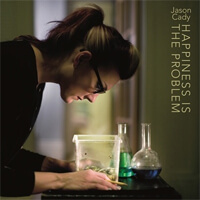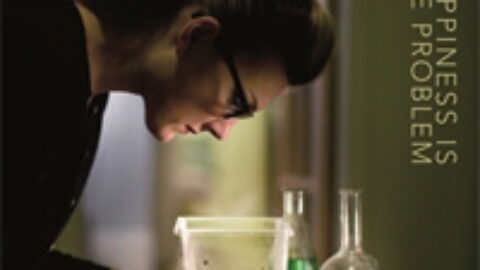 If television’s IFC produced operas in addition to off-kilter films and quirky sitcoms, composer Jason Cady’s Happiness is the Problem might be a prominent member of the program lineup. Released on January 15 via composer Aaron Siegel’s LockStep Records, the opera boasts a decidedly eccentric plot: three unemployed roommates living Greenpoint, Brooklyn find an unconventional way to overcome their financial woes.
If television’s IFC produced operas in addition to off-kilter films and quirky sitcoms, composer Jason Cady’s Happiness is the Problem might be a prominent member of the program lineup. Released on January 15 via composer Aaron Siegel’s LockStep Records, the opera boasts a decidedly eccentric plot: three unemployed roommates living Greenpoint, Brooklyn find an unconventional way to overcome their financial woes.

The trio decides to market slug mucus as “Euphoressence” after Julie—a “
Colloquialism is the opera’s lingua franca, with a libretto driven by a profanity-peppered American vernacular and a score for mixed chamber ensemble that includes electric guitar, drums, and synthesizer alongside more traditional string, brass, and woodwind instrumentation. Here, Cady continues along the musical trajectory in 2001’s operatic work Post-Madonna Prima Donna: the score often comes across as a kind of nondescript, pop-centric elevator music, which effectively highlights the opera’s best trait—its vocal writing.
Ironically, it is through the use of decidedly non-colloquial elements—Cady’s use of dialogue-heavy recitative, interspersed with moments of soaring aria—that the opera proves most dramatically and musically resonant. Erin Flannery’s coloratura soprano glistens with Rossinian aplomb in Julie’s opening aria “Euphoreka.” The melismatic melody’s hypnotic theme returns in Act 2 with even greater transcendence during the aria “The Trouble with Being a Prodigy,” which ends as an engaging trio with soprano Deanna Neil (Maureen) and mezzo-sorano Lisa Komara (Emily). Elsewhere, Cady’s ability to craft dramatic vocal melodies that captivate the listener propels the opera forward with captivating gravity.
 The work’s pacing is indeed frenetic: the three roommates’ banter barrels forward like an operatic Gilmore Girls’ script, with one singer interjecting a new idea just as the last one completes her thought. A crucial component of the opera that is missing from the recording, of course, is the graphic novel—written by co-librettist Nadia Berenstein.The ideal context for this visual complement, is of course, a live concert setting—the graphic novel was presented concurrently with the opera during Experiments in Opera’s inaugural concert on January 16, 2012 at Le Poisson Rouge. And while the decision to not include any of Berenstein’s illustrations in the physical album does not inhibit Cady’s thought-provoking musical statements, the music and graphic novel reinforce the other’s aesthetic attitude and acute sense of timing.
The work’s pacing is indeed frenetic: the three roommates’ banter barrels forward like an operatic Gilmore Girls’ script, with one singer interjecting a new idea just as the last one completes her thought. A crucial component of the opera that is missing from the recording, of course, is the graphic novel—written by co-librettist Nadia Berenstein.The ideal context for this visual complement, is of course, a live concert setting—the graphic novel was presented concurrently with the opera during Experiments in Opera’s inaugural concert on January 16, 2012 at Le Poisson Rouge. And while the decision to not include any of Berenstein’s illustrations in the physical album does not inhibit Cady’s thought-provoking musical statements, the music and graphic novel reinforce the other’s aesthetic attitude and acute sense of timing.
The album itself is divided into only two tracks—one for each act of the opera. This choice was undoubtedly made to encourage continuous listening, and given the relentless rapid-fire delivery of the operatic dialogue, any breaks in the listening experience would be counterproductive and divisive. The album plays less like a concept album of operatic songs and more like an opera LP that requires the listener to turn the vinyl over to Side B to hear Act 2.
With that said, Happiness on LP could solve two problems at once with regards to a fuller realization of the opera as a recording—achieve a closer approximation of Cady’s conception of the listener’s experience, while utilizing the record jacket’s sufficient design space to incorporate Berenstein’s essential graphic novel at the same time.
Jason Cady’s Happiness is the Problem (LockStep Records, 2013) Buy it on Amazon US
























